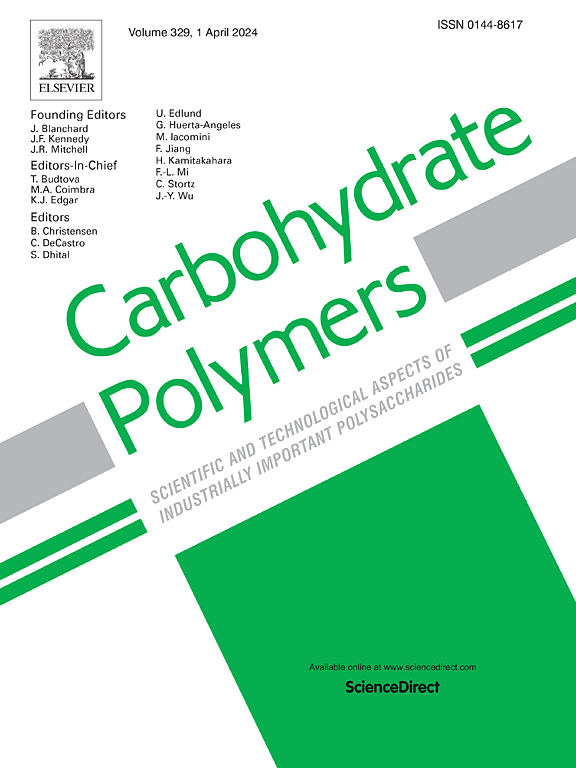Modulating fiber morphology to achieve tunable optical and mechanical properties in bamboo cellulose film
IF 12.5
1区 化学
Q1 CHEMISTRY, APPLIED
引用次数: 0
Abstract
Transparent cellulose films exhibit tremendous potential for optoelectronic applications due to their exceptional optical/mechanical properties and environmental sustainability. However, the intricate relationship between fiber morphology and film performance remains insufficiently understood, which hampers the precise engineering of film performance for targeted applications. In this study, we present a novel strategy to fabricate transparent cellulose films with tunable optical/mechanical properties by precise morphological manipulation of bamboo fibers. A two-stage modification process was employed: initial structural alteration was achieved using a sulfate/deep eutectic solvent pulping method (choline chloride-lactic acid system), followed by molecular-level modification via carboxymethylation to promote fiber swelling. This approach produced two distinct fiber morphologies: non-uniformly swollen “bulging”/uniformly swollen fibers, each endowing resulting films with unique properties. Films made from “bulging” fibers displayed exceptional light scattering behavior, with an impressive haze exceeding 80 % at a transmittance of 85 %. In contrast, films fabricated from uniformly swollen fibers exhibited remarkable mechanical strength, with tensile strength reaching 137 MPa. These findings elucidate the mechanisms by which fiber morphology governs the optical and mechanical properties of cellulose films, advancing the fundamental understanding of structure–property relationships and providing a foundation for the rational design of transparent cellulose films for applications such as solar cells.

在竹纤维素薄膜中调制纤维形态以实现可调的光学和机械性能
透明纤维素薄膜由于其优异的光学/机械性能和环境可持续性,在光电应用中表现出巨大的潜力。然而,纤维形态和薄膜性能之间的复杂关系仍然没有得到充分的了解,这阻碍了针对目标应用的薄膜性能的精确工程。在这项研究中,我们提出了一种新的策略,通过对竹纤维进行精确的形态操纵来制造具有可调光学/机械性能的透明纤维素薄膜。采用两阶段改性工艺:首先使用硫酸盐/深共晶溶剂制浆法(氯化胆碱-乳酸体系)实现初始结构改变,然后通过羧甲基化进行分子水平改性以促进纤维膨胀。这种方法产生了两种不同的纤维形态:非均匀膨胀的“鼓胀”/均匀膨胀的纤维,每一种都赋予了所得到的薄膜独特的性能。由“鼓鼓的”纤维制成的薄膜显示出特殊的光散射行为,在85%的透光率下,令人印象深刻的雾度超过80%。相比之下,均匀膨胀纤维制备的薄膜具有显著的机械强度,拉伸强度达到137 MPa。这些发现阐明了纤维形态控制纤维素膜光学和机械性能的机制,促进了对结构-性能关系的基本理解,并为合理设计用于太阳能电池等应用的透明纤维素膜提供了基础。
本文章由计算机程序翻译,如有差异,请以英文原文为准。
求助全文
约1分钟内获得全文
求助全文
来源期刊

Carbohydrate Polymers
化学-高分子科学
CiteScore
22.40
自引率
8.00%
发文量
1286
审稿时长
47 days
期刊介绍:
Carbohydrate Polymers stands as a prominent journal in the glycoscience field, dedicated to exploring and harnessing the potential of polysaccharides with applications spanning bioenergy, bioplastics, biomaterials, biorefining, chemistry, drug delivery, food, health, nanotechnology, packaging, paper, pharmaceuticals, medicine, oil recovery, textiles, tissue engineering, wood, and various aspects of glycoscience.
The journal emphasizes the central role of well-characterized carbohydrate polymers, highlighting their significance as the primary focus rather than a peripheral topic. Each paper must prominently feature at least one named carbohydrate polymer, evident in both citation and title, with a commitment to innovative research that advances scientific knowledge.
 求助内容:
求助内容: 应助结果提醒方式:
应助结果提醒方式:


